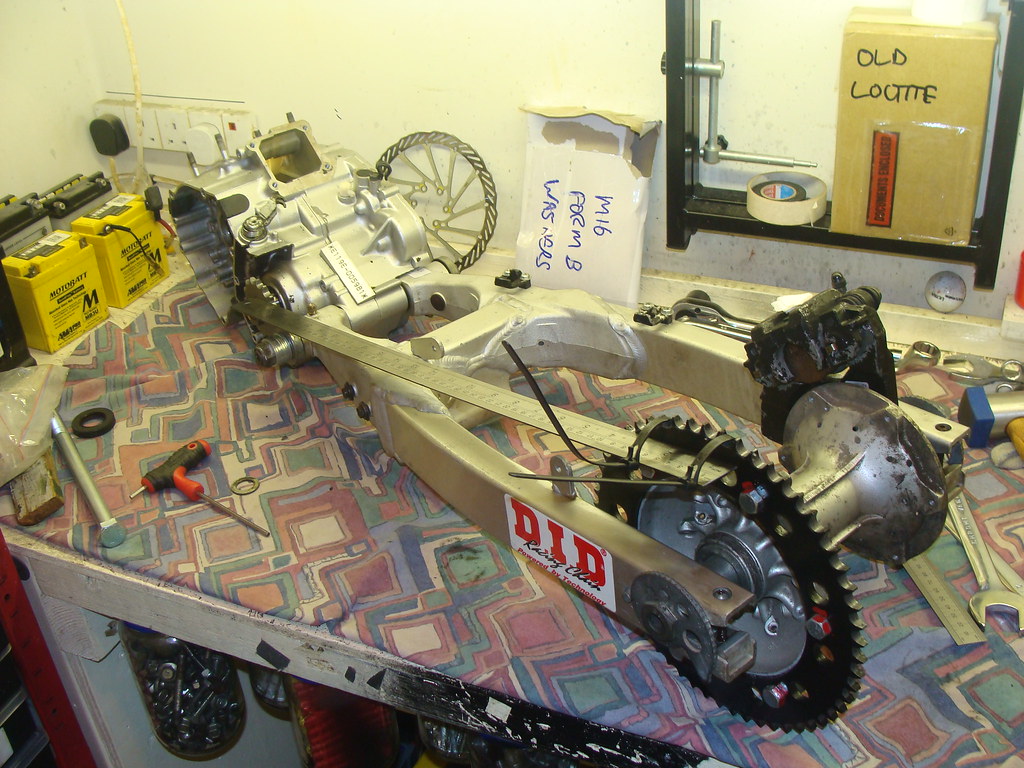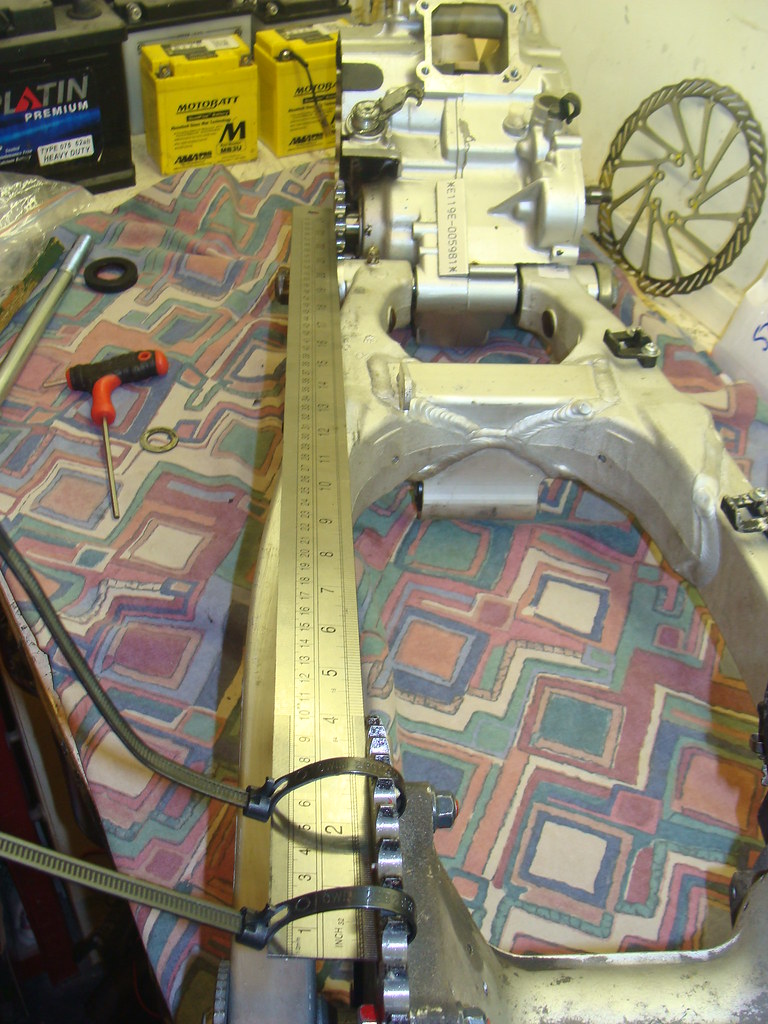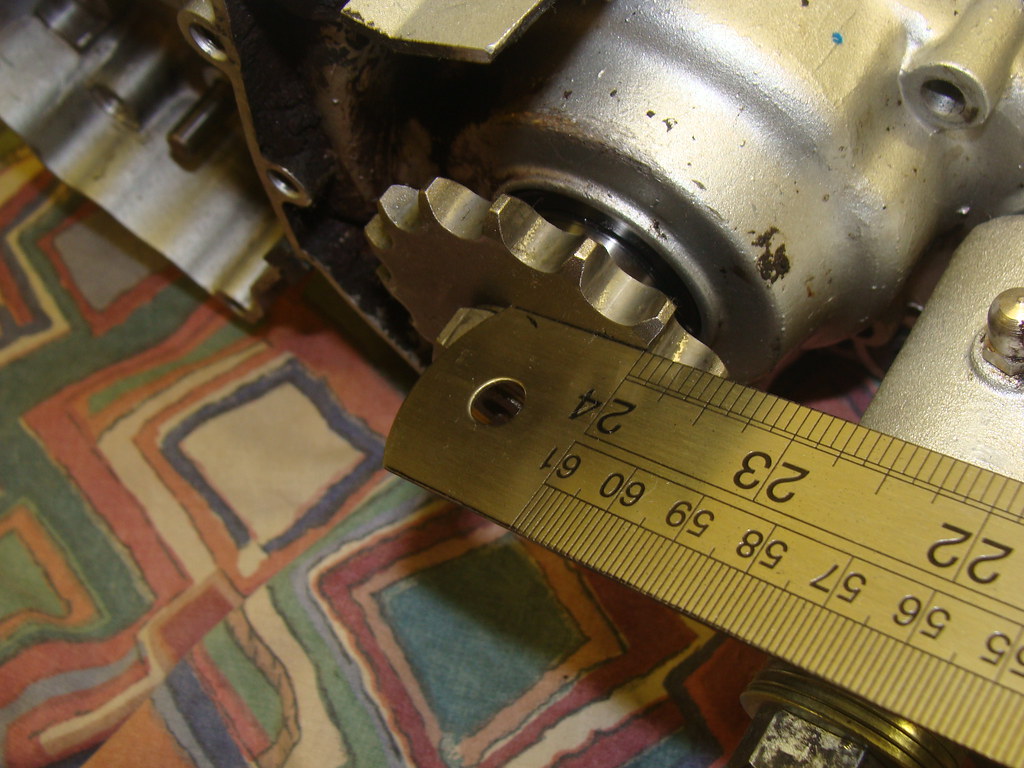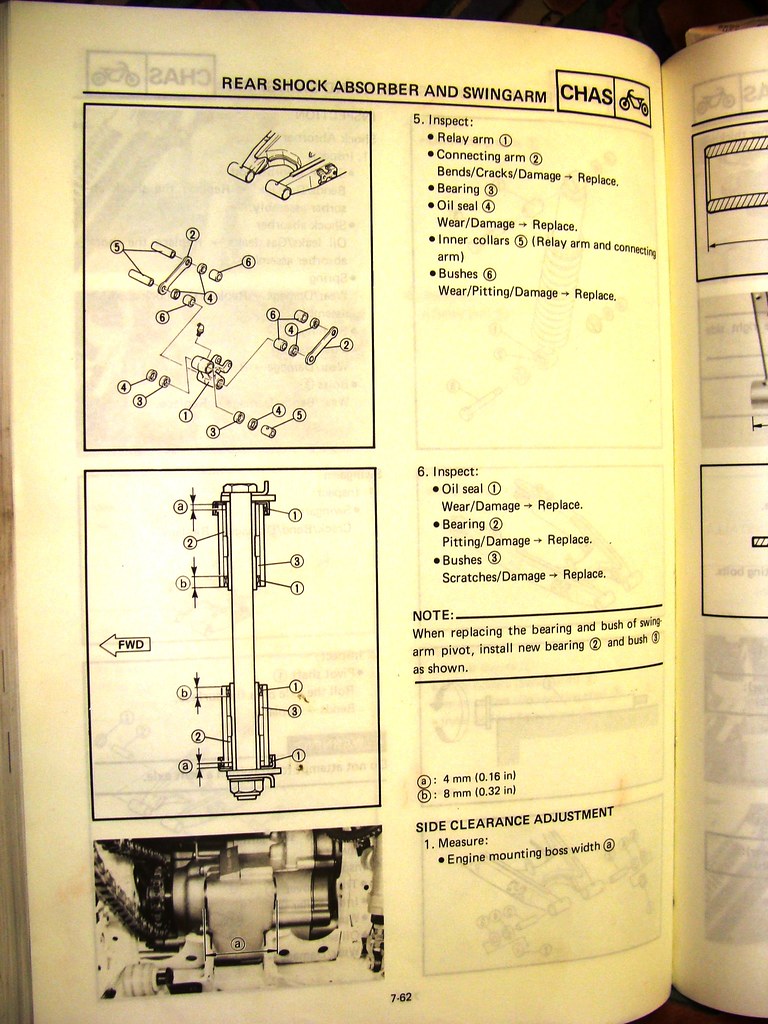@kubicz DT200R 3ET alloy swingarm fits straight in as far as I can see, the bosses on this one I bought from Japan were the same size as the DT125R IIRC. It's basically what the DT125R should have had but Yamaha cheapened it with a (much heavier) replica steel swingarm as it was aimed at the youth market; the DT230 lanza also had a steel swingarm as it occupied a similar once-in-a-blue-moon-offroad-riding sector in the Yamaha range back in the day, whereas the DT200R was a slightly more enduro-ready machine (Kawasaki did the same with the KMX125 and a lot of KMX125 guys fit the KMX200 alloy arm).
The 3ET hub is different to the 125, and it runs 520 chain and sprockets; I didn't have any of these to try so I did a bench mock-up using 3ET swingarm, wheel spacers and brake caliper mount mated to a DT125R hub. A 3mm thick M20 washer between the swingarm and brake caliper mount appeared to line up the DT125R 428 sprockets as you can see (these are DT125RE crankcases and gearbox/output shaft). At the time I had no way of fitting this to a bike and trying it but in my view it gave me enough information that I would have been prepared to try it if I'd owned a roadworthy DT125R at the time.
This gets you an alloy swingarm which accepts the stock chain guide/slipper and retains wheel alignment (if the sprockets line up with the stock 125 hub, the wheels line up. Provided you've followed all the steps in the manual regarding setting the swingarm side clearance, the engine boss governs wheel alignment as much as the frame). You also get to carry on using the DT125R 28-1212 swingarm bearing kit and the OEM linkage bushes/seals.
https://huntersmotorcycles.co.uk/product/all-balls-racing-swing-arm-bearings-kit-set-28-1212-1117
I'd say the only drawback to doing this is, aluminium wears differently to steel and the rear of the linkage bearing housing on the 3ET swingarm is particularly prone to this becaue the rear shock mudflap rubs against it every time the suspension moves. Modern KTMs do this as well and some people glue or JB Weld a coin to the affected area. All that mud and chain lube makes for a pretty harsh environment for gluing two pieces of metal together, so onm my 250EXC I used one of those plastic tubes you get in the centre of a reel of sticky labels you buy in the Post Office (last 3 pics). It's a really nice plastic, tough yet flexible, you can cut it with scissors, open it out and use a hole punch to make the holes to zip tie it on. Anything like that will do the job.
There's a guy on DT200R Australia Facebook page called Peter MacDonald who's always rebuilding 200s and selling parts, see if you can get an alloy swingarm off him. Don't forget to ask him to include the DT200R rear wheel spacers and brake caliper mount as well (Oz is full of DT200Rs and shipping to the UK/Europe isn't as expensive as you might think):
https://www.facebook.com/groups/2895277973902854


























